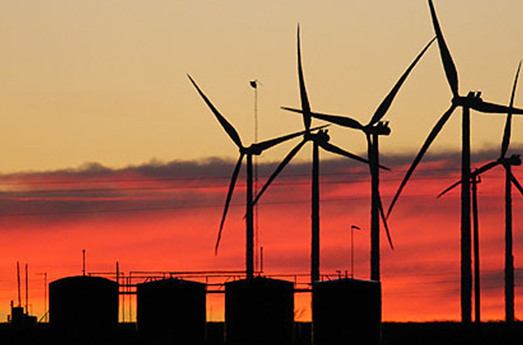
Tucson Electric Power to Unveil New Renewable Energy Systems
Tucson Electric Power is celebrating its newest and largest wind, solar and energy storage resources, which will soon begin providing clean energy for Southern Arizona.
TEP will soon unveil two new renewable energy systems: the Oso Grande Wind farm in southeastern New Mexico and the Wilmot Energy Center solar plus storage project south of Tucson. The systems will help produce nearly 25% of power from renewable resources, jump-starting the utility’s plan to provide 70% clean energy and 80% less carbon emissions by 2035.
“These systems more than double our large-scale renewable energy resources and represent a big step toward the cleaner, greener grid we’re building for our community,” said Susan M. Gray, TEP’s president and CEO. “We’re taking decisive action on behalf of our community to protect our climate.”
In addition to providing cleaner energy for every customer, the new systems allow TEP to provide 100% clean energy to the University of Arizona’s main campus through an innovative long-term partnership. The agreement is the largest bilateral renewable energy agreement between a university and electric utility in North America and will enable the UArizona to offset all of the greenhouse gas emissions associated with its purchased electricity, said Trevor Ledbetter, director of UArizona’s Office of Sustainability.
“I am incredibly proud and grateful the University of Arizona is partnering with Tucson Electric Power on this important initiative,” said UArizona President Robert C. Robbins. “Building a sustainable future is one of the university’s strategic priorities, and this project will have a huge impact in reducing our carbon emissions. I am very excited for what we will be able to accomplish together.”
The 250-megawatt Oso Grande Wind farm will generate enough power each year to serve the annual electric needs of nearly 100,000 homes. Located on 24,000 acres of desert, Oso Grande includes 62 turbines, with some that reach more than 600 feet from base to blade tip.
The site was chosen for its proximity to transmission lines and its strong wind, particularly during hours when solar arrays produce little or no power. TEP owns and operates the system, which was developed by EDF Renewables North America through a build-and-transfer agreement.
The Wilmot Energy Center, located on 1,130 acres southeast of Tucson International Airport, includes a 100-MW solar array and a 30-MW battery energy storage system – each the largest of their kind on TEP’s local energy grid. The WEC will produce enough energy over the course of a year to serve the annual electric needs of about 35,000 homes.
The battery system will be charged by the system’s 314,000 solar panels, which are designed to track the movement of the sun for increased production. TEP will purchase power from the facility under a long-term agreement with an affiliate of NextEra Energy Resources, the system owner and operator.
With both Oso Grande and the WEC online, TEP will have about 625 MW of large community-scale wind and solar resources, with more scheduled to come online soon. The 99-MW Borderlands Wind Project, being built about 100 miles south of Gallup, New Mexico, is expected to be in service by the end of 2021. TEP customers also have installed more than 29,000 rooftop solar systems with a combined capacity of about 300 MW.
These renewable resources support the ambitious clean energy goals outlined in TEP’s Integrated Resource Plan, which describes how TEP will serve customer energy needs over the next 15 years. By replacing coal-fired power plants with less carbon-intensive resources, TEP’s plan will avoid the production of more than 50 million tons of carbon dioxide over 15 years – equivalent to taking three-quarters of a million cars off the road.
Customers can check TEP’s renewable energy output anytime by visiting the Clean Energy Tracker at tep.com/solar-dashboard. Updated every three minutes, the gauges and graphs provide a real-time look at how TEP is satisfying customer energy needs with wind and solar power.





